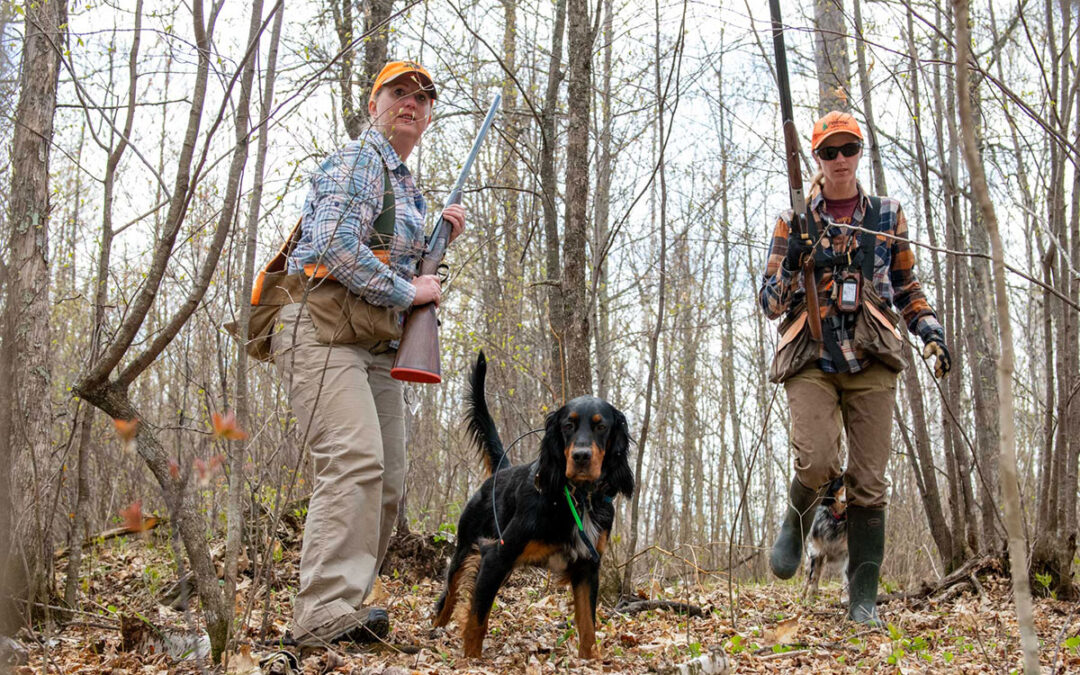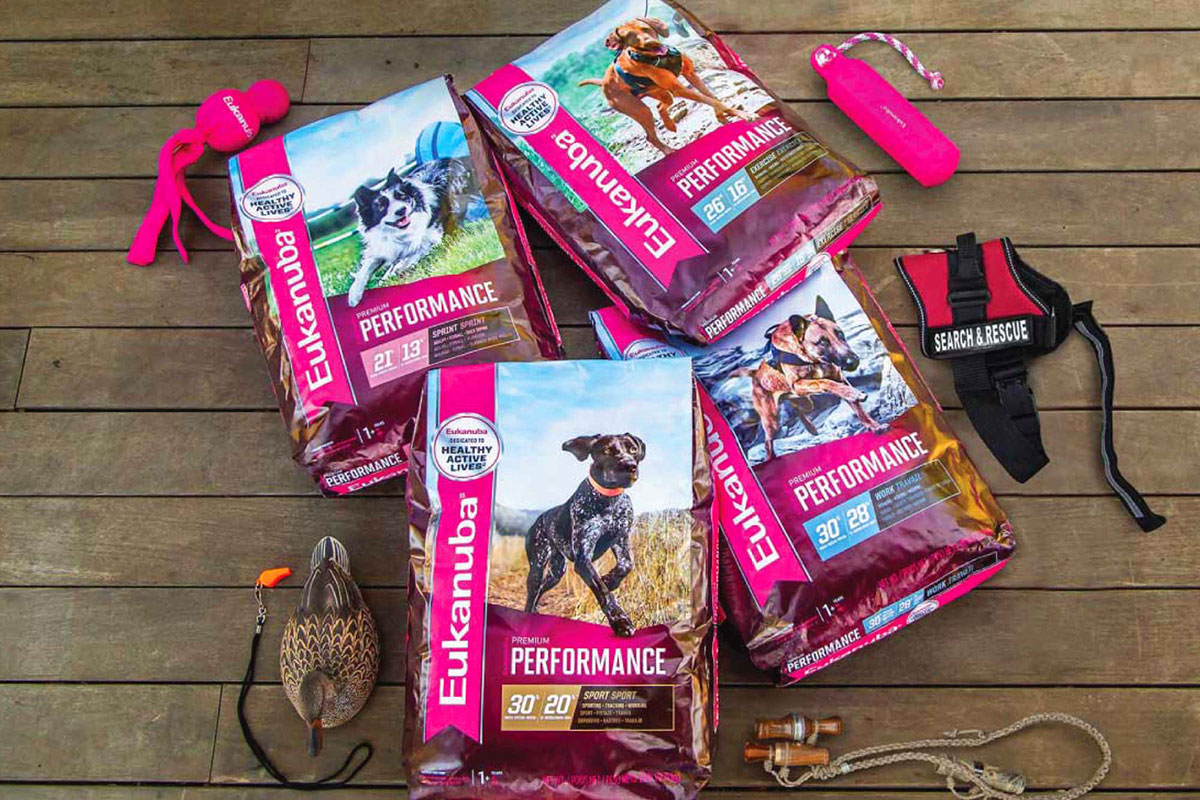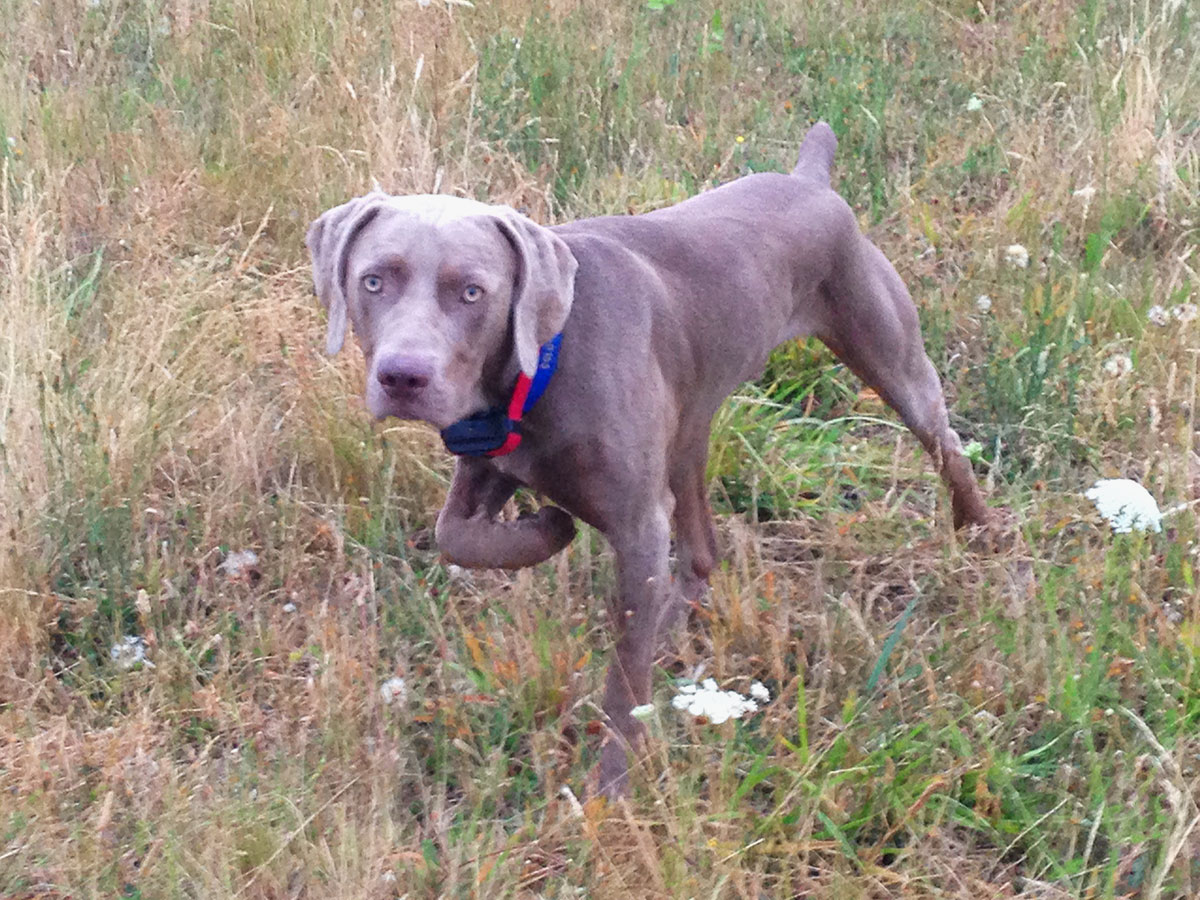Between dangers in the field and training-related issues while hunting, how do you handle and prepare for obstacles that may arise this season?
You’ve waited since last fall for the hunting season to roll around, and your expectations are high for your bird dog. You’ve envisioned staunch points or hard flushes from your dog, and a heavy game bag at the end of each hunt. But what do you do when your dog has other ideas?
Hunting with a bird dog isn’t always easy. Sometimes a dog completely forgets his training or runs into unforeseen dangers that can result in a medical emergency far from the truck. How do you handle these issues? Read on.
In-Field Training
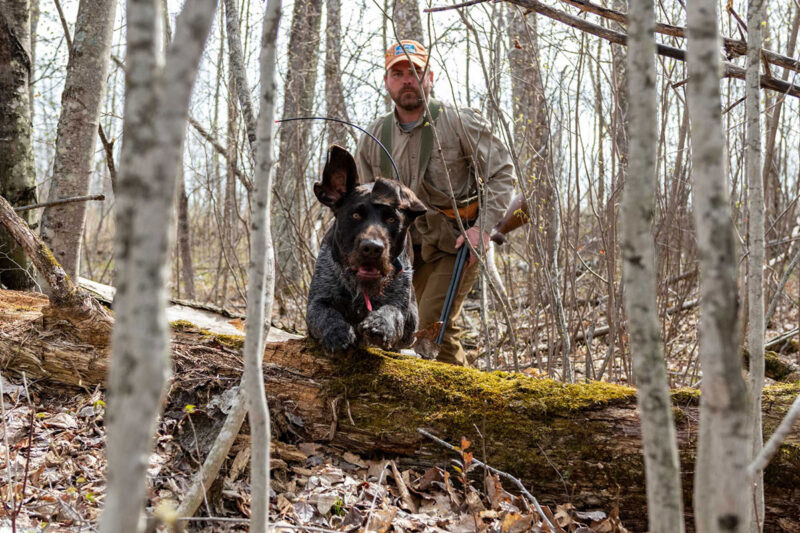
The uplands are full of difficult terrain that can challenge a dog’s body. The best principle: Hope for the best, but prepare for the worst.
Turning your dog loose in the uplands comes with a whole new set of sights, sounds, and smells for a bird dog. He knows your training grounds well, and probably even knows the usual spots where you plant birds—but the wild uplands are a different ball game.
When they first start their hunt, dogs may experience sensory overload and completely forget the training you’ve worked on all summer. You may find your shoulders slumping or feel your blood pressure rising as you watch birds fly off from your dog cruising through them. The good news? The field is the perfect place for training.
“We can use hunting as training,” says Eukanuba Pro Trainer Stephen Faust of Stoneybrook Outfitters & Gordon Setters. “In fact, it’s the best kind of training.”
Faust suggests that for the first few hunts, you focus on handling your dog. Let someone else hunt while you run your dog for them. This sets up your dog for success rather than in-the-field frustrations from you.
“You’ll run into issues such as dogs taking a couple of steps on the flush, or even competition between dogs when running a brace,” explains Faust. “When I run into issues like my dog taking an extra step, I’ll pick a dog up and put him back in the place where he should have stopped, and reinforce the ‘whoa’ command.”
According to another Eukanuba Pro Trainer, Jared Moss of Best Gun Dogs in Utah, your dog is to be held to expectations, and if he doesn’t perform in the field, it’s vital that you take the time to reinforce your training.
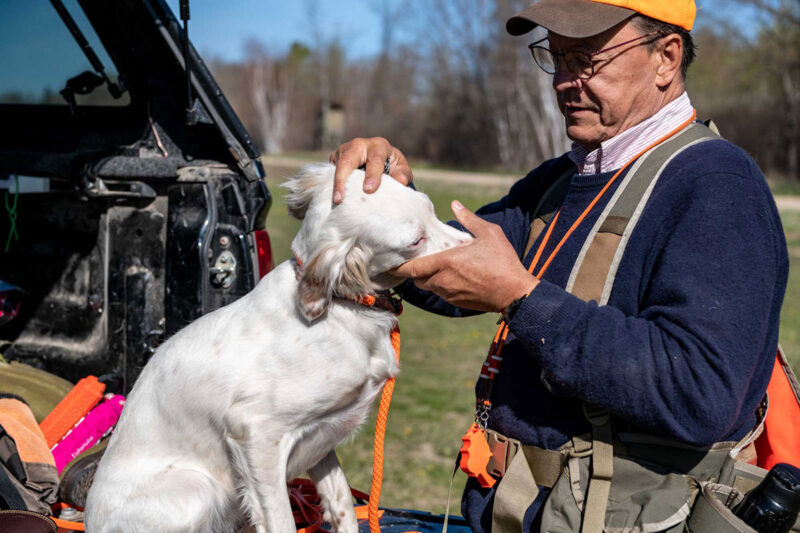
Help prevent hidden dangers from turning into bigger problems after a hunt by completing a simple tailgate check.
“If I’m running a seasoned bird dog, I expect him to point, stand steady, and retrieve,” says Moss. “As long as I did my part in the off season, then I expect him to uphold my standards.”
Prior to heading afield, Moss suggests that you train in as much distraction work as possible with your dog to prepare him for the overwhelming sights and smells of the hunt. Utilize your resources at home, such as kids, soccer balls, and other distractions while your dog is on point. That way, he knows what’s important to focus on and can do the task without a misstep all day long.
“If a dog breaks in the field, resulting in a flush, I bring him back to the spot and tell him to ‘whoa.’ I take the time to reinforce his training in the moment. Once the dog is refocused, we’ll start again.”
Allowing your dog to disregard his training while hunting will only increase problems down the road. Addressing the issue on the spot helps set you both up for future success.
In-Field Dangers
The uplands are full of difficult terrain that can challenge a dog’s body. The best principle: Hope for the best, but prepare for the worst.
Before heading afield, especially to new covers where you aren’t aware of any field dangers, always keep a list of veterinarians in the area in case of an emergency. A solid relationship with your home vet will go a long way, but knowing the location of the closest veterinary clinic when on a trip is essential.
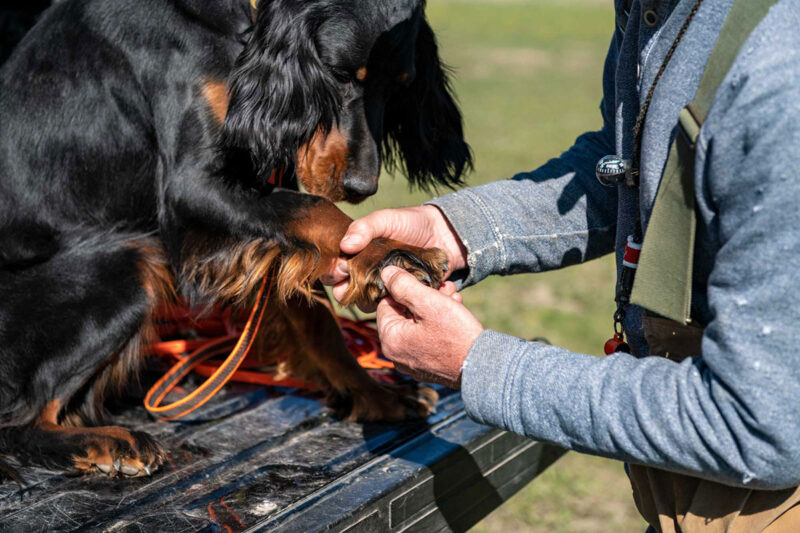
Always check your dog over thoroughly including his paws and between toes, in the eyes and ears, and even in his armpits.
Having a small field med kit in your bird vest is important, as well as a larger truck med kit. Always carry supplies in your vest that can stop bleeding until you get back to the truck, or that can pull cactus thorns or other sharp obstructions quickly. Gauze, medical tape, tweezers, and a Leatherman should be staples in your vest kit. Back at the truck, you can load your med kit with more gear to keep you covered until you can reach a veterinarian. For a complete list of recommended supplies, visit the American Veterinary Medical Association’s First Aid Resource at www.avma.org/firstaid.
You can also prevent hidden dangers from turning into bigger problems after a hunt by completing a simple tailgate check.
“Always check your dog over at the end of the day,” suggests Faust. “Sometimes small things like seeds or grass awns can harm your dog down the road. Always check paws and between toes, in their eyes and ears, and even in armpits.”
Injuries can happen, and we as handlers must prepare and get ahead of them. Always have a way to carry your dog out of the uplands, have the proper first aid supplies handy, and do your dog justice by checking him over for hidden dangers at the end of a long hunt.

